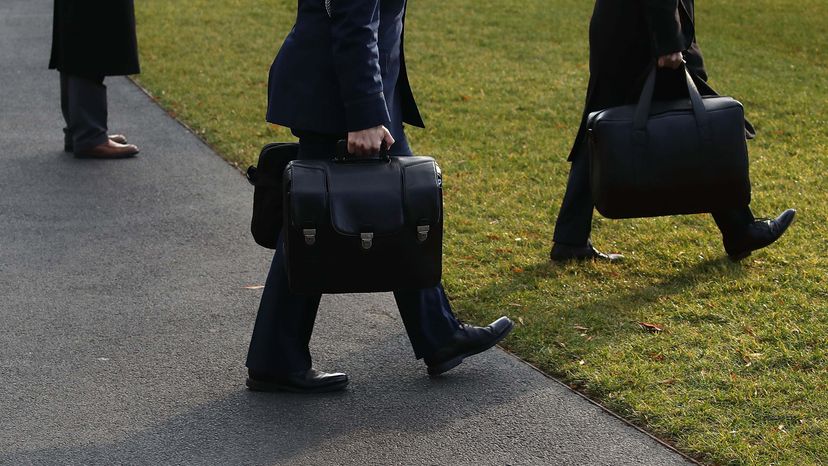
In his annual New Year's Day address, North Korean dictator Kim Jong Un warned the U.S. not to attack his country. "The entire mainland of the U.S. is within the range of our nuclear weapons and the nuclear button is always on the desk of my office," Kim said, according to NBC News.
Kim's utterance was just one of many in the North Korean regime's long history of making bellicose threats, though recent North Korean advances in missile capability may have made it seem a little more chilling. But what was even more startling was U.S. President Donald J. Trump's response the next day. "Will someone from his depleted and food starved regime please inform him that I too have a Nuclear Button, but it is a much bigger & more powerful one than his, and my Button works!" he tweeted.
Advertisement
Trump's retort may have led some Americans to wonder whether he actually has a "Nuclear Button" on his desk in the Oval Office, similar to the box with the red button that he uses to order one of the numerous Diet Cokes that he consumes each day. ("Everyone does get a little nervous when I press that button," Trump once joked to a visiting Financial Times journalist.)
But rest assured that he doesn't actually have such a button, a fact conceded by the White House press secretary in a Jan. 3 press briefing:
Reporter: The President knows that there's no actual one nuclear button. You're saying it is actually bigger. But the reality is —
Ms. Sanders: The President is very well aware of how the process works and what the capacity of the United States is. And I can tell you that it's greater than that of North Korea.
For those who worried about Trump's temperament, his tweet probably brought back memories of the 2016 presidential campaign, when a TV ad for his opponent Hillary Clinton featured a former nuclear launch officer, who warned that the prospect of Trump controlling the nuclear arsenal "scares me to death."
Nevertheless, the process of launching a nuclear attack isn't something that can be initiated simply with the tap of a finger. As the Union of Concerned Scientists' All Things Nuclear blog details, instead of a button on his desk, Trump has something called "the football." It's a 45-pound (20-kilogram) black leather suitcase with an aluminum frame, carried by a military officer who constantly accompanies him everywhere he goes. It contains a secure communications system and a manual of launch options created by the Pentagon for the president to choose from.
Advertisement


